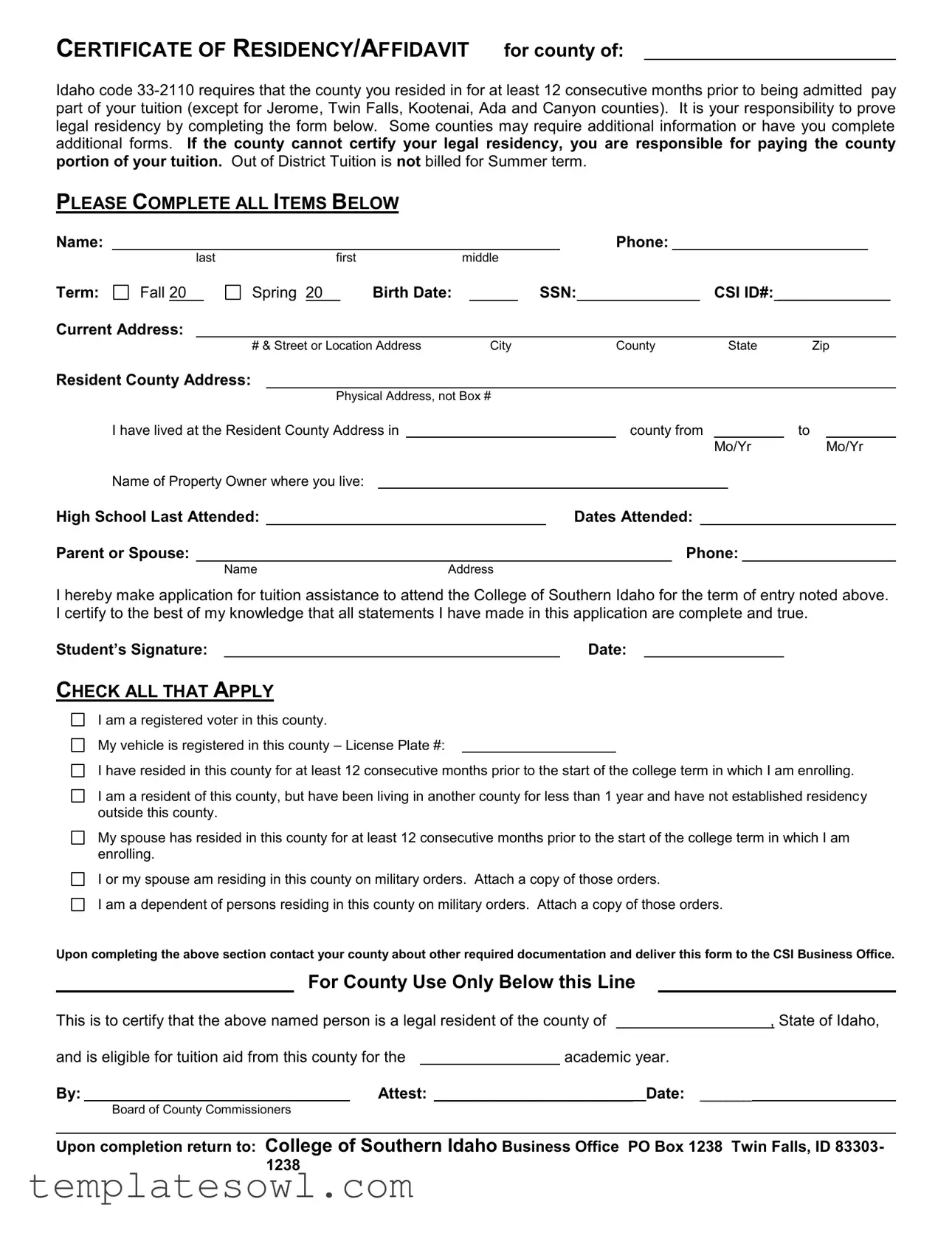What is a Certificate of Residency?
A Certificate of Residency is a document required by the state of Idaho to prove that a student has lived in a specific county for at least 12 consecutive months. This certificate allows the county to pay a portion of the student's tuition at the College of Southern Idaho, except for students from Jerome, Twin Falls, Kootenai, Ada, and Canyon counties.
Who needs to fill out the Certificate of Residency form?
Any student who wishes to receive tuition assistance from their resident county must complete this form. To qualify, students must demonstrate that they have lived in the county for at least 12 consecutive months before their college term starts.
What information do I need to provide on the form?
The form requires various details, including your name, birth date, Social Security number, CSI ID number, current address, resident county address, high school attended, and information about your parent or spouse. You must also confirm your residency status and check applicable boxes for additional criteria.
What if I have not been a resident for 12 months?
If you have not established residency in your current county for 12 months, you cannot apply for tuition assistance. However, you can indicate that you or your spouse have lived in the county on military orders and may provide a copy of those orders.
How do I submit the Certificate of Residency form?
After completing the form, you should contact your county to find out if any additional documentation is required. Once you have finalized everything, deliver the form to the CSI Business Office at the College of Southern Idaho.
What happens if my county does not certify my residency?
If the county cannot certify your residency, you will be responsible for paying the portion of your tuition that the county would have covered. Therefore, ensuring all required information is accurate and complete is essential.
What if I attend the summer term?
For the summer term, the Out of District Tuition is not billed. However, students still need to complete a Certificate of Residency if they want to receive county tuition assistance for autumn or spring terms.
Are there any specific counties that do not allow tuition assistance?
Yes, students from Jerome, Twin Falls, Kootenai, Ada, and Canyon counties will not be eligible for county tuition assistance. Students from these counties are responsible for covering their tuition costs in full.
What documentation should I attach if my residency is tied to military orders?
If you or your spouse is residing in the county on military orders, you must attach a copy of those orders to the Certificate of Residency form. This documentation is crucial for verifying your residency status.
What should I do if I have questions about the Certificate of Residency form?
If you have any questions, it is advisable to contact the CSI Business Office or your local county office. They can provide guidance on completing the form and inform you of any additional requirements specific to your situation.

